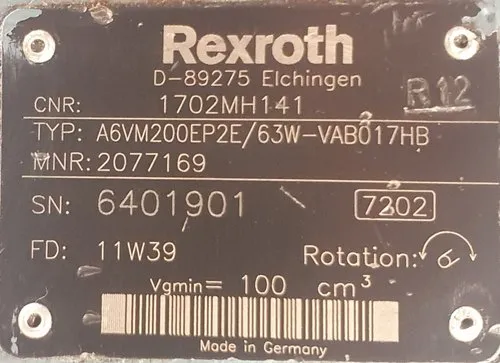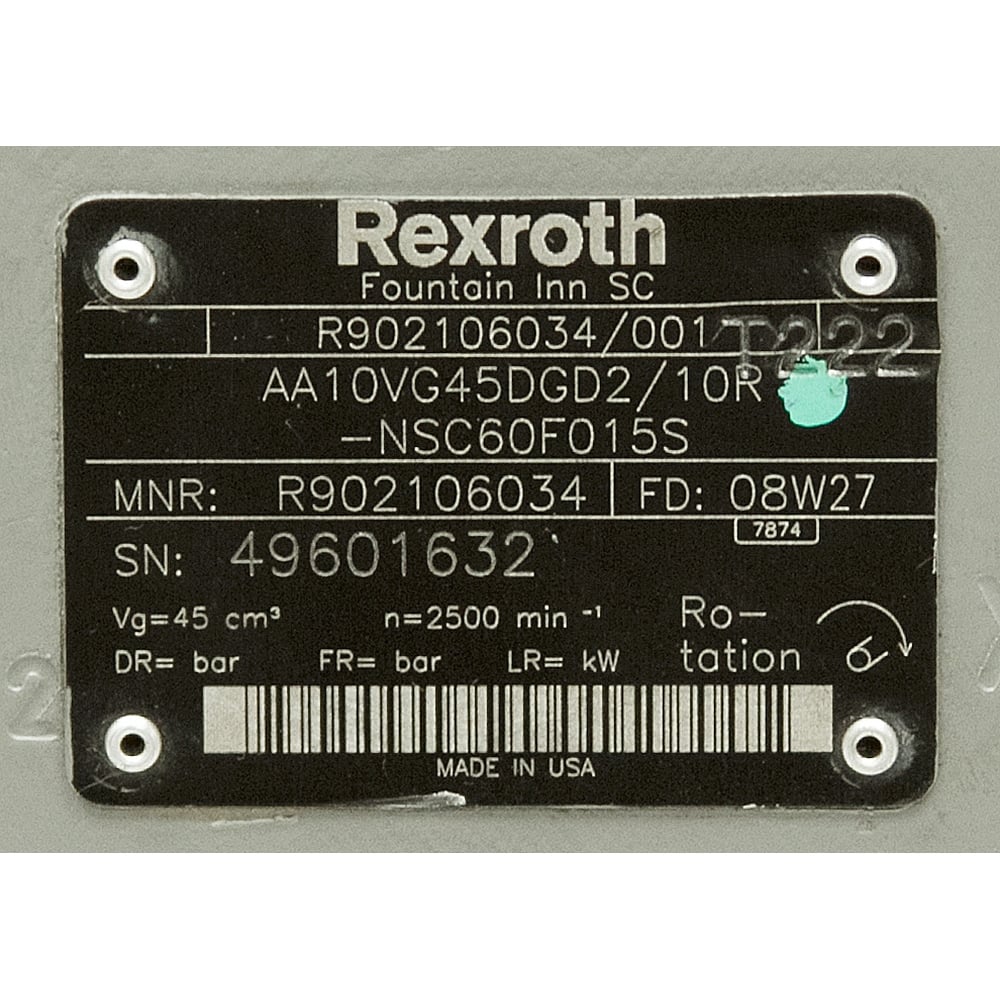Flutec hydraulic pumps are popular in industrial applications for their optimal performance and reliability. These pumps are designed with high efficiency and low noise to increase productivity and reduce maintenance costs. In this outline, we will discuss what Flutec hydraulic pumps are, their benefits, types, applications, how to choose the right pump, maintenance and repair, and resources for additional information.
Flutec hydraulic pumps are an essential component in many industrial applications, from manufacturing to construction and agriculture. Their superior performance and reliability have made them a popular choice among industry professionals. In the following sections, we will explore the features and benefits of Flutec hydraulic pumps, as well as how to choose the right pump for your specific needs and properly maintain and repair it to ensure optimal performance.
What are Flutec Hydraulic Pumps?
Flutec hydraulic pumps are high-performance pumps that are specifically designed for use in industrial applications. They are known for their superior efficiency, low noise, and high durability, making them a popular choice for a wide range of industrial applications.
Zero Turn Hydraulic Pump Troubleshooting(Definitive Guide 2023)
What sets Flutec hydraulic pumps apart from other hydraulic pump brands is their attention to detail and commitment to quality. Flutec pumps are designed with advanced technology and high-quality materials to ensure reliable and efficient operation in the most demanding industrial environments.
Flutec hydraulic pumps are engineered to deliver high levels of performance, efficiency, and durability, making them a preferred choice for industries that require high-performance hydraulic systems. They are also designed to be easy to maintain and repair, which further adds to their appeal in industrial settings.
In the next sections, we will delve deeper into the benefits of Flutec hydraulic pumps, the different types available, the applications they are best suited for, and how to choose the right pump for specific industrial applications.
#3. Benefits of Flutec Hydraulic Pumps
Flutec hydraulic pumps offer several benefits that make them a popular choice in industrial applications. One of the main benefits of Flutec hydraulic pumps is their high efficiency. These pumps are designed to minimize energy loss and maximize output, which can lead to significant cost savings over time.
Another benefit of Flutec hydraulic pumps is their low noise operation. Many industrial applications require pumps to operate for extended periods of time, and excessive noise can be a major source of disturbance and even a safety hazard. Flutec hydraulic pumps are engineered to operate quietly, making them well-suited for noise-sensitive environments.
Durability is another important benefit of Flutec hydraulic pumps. These pumps are built to withstand the harsh conditions of industrial environments, and are designed to last for many years with minimal maintenance. This translates to lower maintenance costs and increased uptime, which can lead to greater productivity and profitability for industrial operations.
Overall, the benefits of Flutec hydraulic pumps make them a popular choice for a wide range of industrial applications. Their high efficiency, low noise operation, and durability make them well-suited for demanding applications where reliability is crucial.
Types of Flutec Hydraulic Pumps
Flutec hydraulic pumps come in a variety of types, each designed for different industrial applications. The following are some of the most common types of Flutec hydraulic pumps:
- Axial Piston Pumps: These pumps use a series of pistons arranged in a circular pattern to generate hydraulic pressure. They are ideal for high-pressure applications and are commonly used in heavy machinery.
- Gear Pumps: These pumps use a series of gears to generate hydraulic pressure. They are simple in design and ideal for low-pressure applications. They are commonly used in agricultural and light industrial machinery.
- Vane Pumps: These pumps use a series of vanes that slide in and out of the pump chamber to generate hydraulic pressure. They are compact in design and ideal for low- to medium-pressure applications. They are commonly used in mobile equipment such as cranes and forklifts.
- Radial Piston Pumps: These pumps use a series of pistons arranged in a circular pattern around a camshaft to generate hydraulic pressure. They are ideal for high-pressure applications and are commonly used in heavy machinery.
- Screw Pumps: These pumps use a series of intermeshing screws to generate hydraulic pressure. They are ideal for high-viscosity fluids and are commonly used in oil and gas applications.

Each type of Flutec hydraulic pump has its own unique advantages and disadvantages, and the choice of pump type will depend on the specific requirements of the application. It is important to consult with a hydraulic expert to ensure that the right pump type is selected for optimal performance and reliability.
Applications of Flutec Hydraulic Pumps
Flutec hydraulic pumps are widely used in industrial applications due to their performance, reliability, and efficiency. These pumps are designed to operate in demanding environments and provide consistent results with minimal maintenance. In this section, we will discuss some of the most common industrial applications where Flutec hydraulic pumps are used.
One of the most common applications for Flutec hydraulic pumps is manufacturing. These pumps are used in a variety of manufacturing processes, including metal stamping, injection molding, and CNC machining. Flutec hydraulic pumps provide the high pressure and precision required for these processes, ensuring that parts are manufactured to exact specifications.
Construction is another industry where Flutec hydraulic pumps are commonly used. These pumps are used in heavy equipment such as excavators, bulldozers, and cranes. Flutec hydraulic pumps provide the power and reliability required for these machines to perform heavy-duty tasks such as digging, lifting, and moving large objects.
Monarch Hydraulic Pump Parts Diagram
In the agriculture industry, Flutec hydraulic pumps are used in tractors, combines, and other farm equipment. These pumps are used to power hydraulically controlled systems such as plows, seed drills, and harvesters. Flutec hydraulic pumps provide the high flow rates and pressure required for efficient and effective operation of agricultural equipment.
Other industries where Flutec hydraulic pumps are commonly used include mining, oil and gas, and marine. In the mining industry, Flutec hydraulic pumps are used in equipment such as excavators, loaders, and haul trucks. These pumps provide the power and reliability required to move large amounts of material efficiently. In the oil and gas industry, Flutec hydraulic pumps are used in drilling rigs, production equipment, and transportation systems. These pumps provide the high pressure and flow rates required for the extraction and transportation of oil and gas.
In the marine industry, Flutec hydraulic pumps are used in a variety of applications, including steering systems, winches, and cranes. These pumps provide the power and precision required for safe and efficient operation of marine equipment.
Overall, Flutec hydraulic pumps are well-suited for a wide range of industrial applications due to their performance, reliability, and efficiency. Whether in manufacturing, construction, agriculture, mining, oil and gas, or marine, Flutec hydraulic pumps provide the power and precision required to get the job done.
Choosing the Right Flutec Hydraulic Pump
When choosing the right Flutec hydraulic pump for a specific industrial application, it’s important to consider several factors that will impact the performance and longevity of the pump. One key factor is the required flow rate, which is the amount of hydraulic fluid that the pump can deliver per unit of time. The required flow rate will depend on the specific application and the amount of work that needs to be done.
Another important factor to consider is the required pressure of the hydraulic system. The pressure rating of the pump should be equal to or greater than the maximum pressure of the system it will be operating in. This is important for ensuring optimal performance and preventing damage to the system.

The type of pump is also an important consideration when selecting a Flutec hydraulic pump. For example, axial piston pumps are well-suited for high-pressure applications, while gear pumps are better suited for low-pressure applications. It’s important to choose the right type of pump for the specific application to ensure optimal performance and longevity.
Other factors to consider when choosing a Flutec hydraulic pump include the operating temperature range, the type of hydraulic fluid being used, and the level of noise and vibration that is acceptable for the application. By taking all of these factors into account, it’s possible to choose the right Flutec hydraulic pump for a specific industrial application and ensure optimal performance and reliability.
Maintenance and Repair
Proper maintenance and repair of Flutec hydraulic pumps is essential to ensure optimal performance and prolong the lifespan of the equipment. Regular maintenance not only ensures optimal performance but also prevents costly repairs and downtime due to equipment failure. Here are some best practices to follow when maintaining and repairing Flutec hydraulic pumps:
- Regularly inspect the hydraulic pump and its components for signs of wear and damage. Look for leaks, cracks, or other signs of damage to the pump housing, hoses, fittings, and other components.
- Check the oil level and quality regularly. Make sure to use the recommended type of hydraulic fluid and replace the fluid at regular intervals to ensure optimal pump performance.
- Keep the hydraulic pump and its components clean and free of dirt, debris, and other contaminants that can clog the system and reduce performance.
- Check the pressure relief valve and other valves regularly to ensure they are functioning properly. Replace any worn or damaged valves as needed.
- Lubricate the pump and its components regularly to ensure smooth operation and reduce wear and tear.
- When repairing the pump, make sure to use genuine Flutec replacement parts to ensure proper fit and optimal performance.
- When troubleshooting issues with the hydraulic pump, refer to the manufacturer’s manual or seek professional assistance if needed.
By following these best practices, you can ensure optimal performance and prolong the lifespan of your Flutec hydraulic pump.
Resources and Additional Information
In addition to the information provided in this outline, there are a variety of resources and additional information available for those interested in Flutec hydraulic pumps. Some useful resources include:
- Flutec’s official website: The official Flutec website provides detailed information about their product line, including technical specifications and product brochures. It also features a dealer locator tool to help customers find authorized Flutec dealers in their area.
- Industrial equipment suppliers: Many industrial equipment suppliers offer Flutec hydraulic pumps as part of their product line. These suppliers may also offer additional information about Flutec pumps and how they can be used in specific applications.
- Online forums and communities: There are a variety of online forums and communities dedicated to industrial equipment and machinery. These forums can be a useful resource for learning more about Flutec hydraulic pumps and how they are used in different industries.
- Technical manuals and guides: Flutec and other industrial equipment manufacturers often provide technical manuals and guides that provide detailed information about their products. These resources can be a useful tool for learning more about Flutec hydraulic pumps and how they can be maintained and repaired.
- Industry trade shows and events: Attending industry trade shows and events can be a great way to learn more about Flutec hydraulic pumps and other industrial equipment. These events offer the opportunity to connect with experts in the field and learn about the latest advances in industrial technology.
By taking advantage of these resources and staying up-to-date with industry best practices and regulations, individuals and organizations can ensure they are getting the most out of their Flutec hydraulic pumps.











